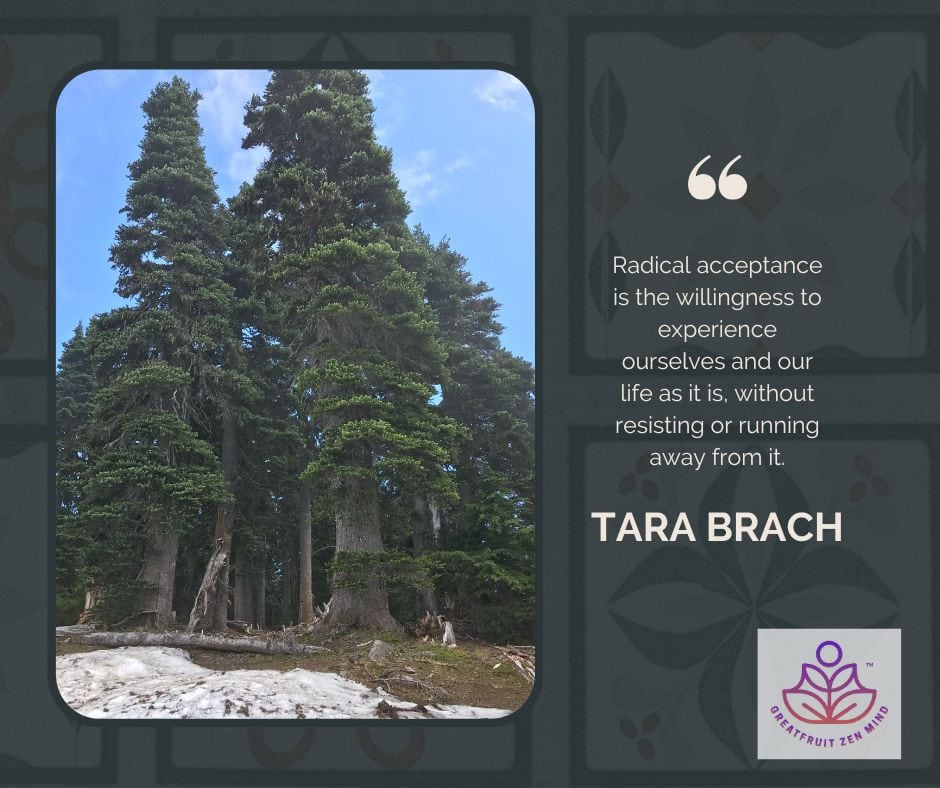Read time 3 minutes. Radical Acceptance is a stand alone article in our series regarding Acceptance.
When we talk about radical acceptance, it’s tempting to frame it as an all-or-nothing proposition. Zen teachings certainly suggest as much. Accept everything, without exception. But what if you’re not ready for that? What if the very idea feels unreasonable, even absurd?
Zen has room for that, too.
Meeting the practice where you are
The beauty of these teachings is that they work on different levels. A small shift in acceptance can bring a small transformation. Throw yourself fully into the practice, and the change can reshape your life entirely.
Most of what I’ve written in these archived lessons wades out into the deep end of the pool. That wasn’t by accident—I wanted to build a strong foundation. But advanced teachings can ask more of us than we’re ready to give. Sometimes it helps to step back and meet the practice where it meets you.
There’s no single entry point. This is your journey, your practice. Every path begins where you actually stand, not where you imagine you should be.
Accepting nonacceptance
This is where the paradox of radical acceptance becomes practical. If you can’t accept what is, then begin by accepting your inability to accept.
Eckhart Tolle captures this in Stillness Speaks:
“Accept what is.”
“I cannot. I’m agitated and angry.”
“Then accept that. Accept your agitation, your anger, your resistance. Bring acceptance into your nonacceptance. Then see what happens.”
This is not a loophole—it’s the path itself. The practice of embracing your nonacceptance uses the very technique that will eventually allow you to embrace all things.
Think of it like learning piano. No one sits down expecting to be Mozart on day one. You practice scales. You practice the basics. Over time, your hands move differently, your ear listens differently. Radical acceptance is much the same—it builds through repetition, through presence, through letting the smallest steps count.
Radical acceptance: Peeling back the layers
If you’ve been reading other lessons here, you’ll notice familiar themes: paradox, presence, curiosity, investigation. They all circle back to this peeling away of layers.
You don’t force radical acceptance with the thinking mind. You position yourself for transformation by practicing, again and again, in the moment you’re actually in. Accept your impatience. Then accept your fear. Finally, accept your refusal. From there, the layers begin to loosen.
The good news? You don’t have to be a sage or a master to begin. You can start with exactly what’s in front of you, however imperfect, however resistant. The less-good news? There are always more layers ahead. But each layer you face strengthens the same muscle.
That’s the work. Not arriving in an instant, but practicing into readiness. Radical acceptance is not forced. It is cultivated.
Explore more
Eckhart is likely the most influential modern teacher for western practitioners of eastern philosophy and practice. His wildly popular book “The Power of Now” is a great place to get a very approachable overview of many of the concepts that we delve into here. You can find information on it and a wide variety of other insights and meditations on his website.
–
Thanks for visiting Greatfruit Zen Mind.
We’re building something bigger than ourselves
and we want you to be a part of it.
Photo by Angie Fritz
🌀 From the GZM Archives – Polished, Preserved, Still Relevant.


Leave a Reply